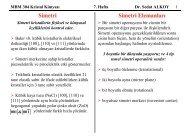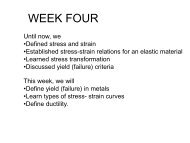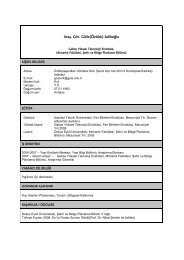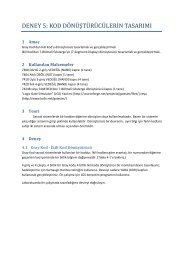How to Hire A-Players: Finding the Top People for ... - GIT home page
How to Hire A-Players: Finding the Top People for ... - GIT home page
How to Hire A-Players: Finding the Top People for ... - GIT home page
Create successful ePaper yourself
Turn your PDF publications into a flip-book with our unique Google optimized e-Paper software.
Be Objective and Make <strong>the</strong> Time<br />
Conclusion 195<br />
You need two things <strong>to</strong> implement your organizational strategy: objectivity<br />
and time. Objectivity means that you must remove yourself<br />
emotionally from your current team in order <strong>to</strong> design <strong>the</strong> organizational<br />
structure that you need. Carving out time is also critical, because<br />
this kind of exercise is very important but rarely urgent.<br />
O<strong>the</strong>r tasks will always try <strong>to</strong> push this work aside. You must make<br />
it a priority. The payoffs from it are potentially huge.<br />
Because of both <strong>the</strong>se fac<strong>to</strong>rs, you should consider hiring a consultant<br />
or some o<strong>the</strong>r trusted advisor who really understands this process<br />
<strong>to</strong> help you through it. This person should provide you with a<br />
strategic framework, help you <strong>to</strong> define <strong>the</strong> organizational structure,<br />
offer guidance based on experience doing similar projects <strong>for</strong> o<strong>the</strong>r<br />
companies, and provide ongoing advice and accountability. It’s worth<br />
spending money with a good person <strong>to</strong> have this done well.<br />
Completing this work allows you <strong>to</strong> provide your A-players with<br />
<strong>the</strong> clarity and focus <strong>the</strong>y need <strong>to</strong> step up and contribute more <strong>to</strong><br />
your business. By defining people’s roles and giving <strong>the</strong>m focus,<br />
your employees—particularly your A-players—quickly take more<br />
ownership, responsibility, and initiative. Watching your key people<br />
embrace your business is enough <strong>to</strong> make this whole exercise worth<br />
<strong>the</strong> ef<strong>for</strong>t.<br />
I recently spoke with a business owner about <strong>the</strong> strategic importance<br />
of having an organizational chart <strong>for</strong> a business. He <strong>to</strong>ld me<br />
that he agreed completely and <strong>the</strong>n showed me <strong>the</strong> one he had developed<br />
<strong>for</strong> his company. I <strong>to</strong>ok a look at it and asked him, ‘‘Why<br />
isn’t <strong>the</strong>re a financial role on this chart?’’ He looked at me and said,<br />
‘‘That’s not necessary—I handle all <strong>the</strong> finances.’’<br />
He had completely missed <strong>the</strong> point of revisiting your organizational<br />
chart: <strong>to</strong> help you remove yourself from <strong>the</strong> business while<br />
creating an overview of every role required <strong>for</strong> profitably acquiring,<br />
serving, and keeping cus<strong>to</strong>mers. You define <strong>the</strong> roles needed <strong>to</strong><br />
make your business run apart from <strong>the</strong> people you currently<br />
employ—and that includes yourself. As Michael Gerber points out<br />
in his legendary business book The E-Myth, a good organizational<br />
chart is meant <strong>to</strong> focus you on hiring <strong>the</strong> right people <strong>to</strong> fill more

















